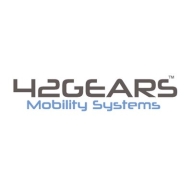

Microsoft Intune and 42Gears SureMDM compete in the mobile device management category. Microsoft Intune appears to have the upper hand with its deep integration into Microsoft ecosystems, offering comprehensive policy management and cloud administration.
Features: Microsoft Intune integrates seamlessly with Office 365 and Azure, perfect for leveraging single sign-on and wide-ranging compliance policies. It allows for comprehensive cloud-based administration and offers conditional access to enhance security. 42Gears SureMDM focuses on application pushing, secure tunnels, and real-time location tracking, although it lacks the extensive enterprise integration found in Intune.
Room for Improvement: Microsoft Intune could improve by extending support for non-Windows OS like macOS and Linux and enhancing reporting capabilities. It needs better Android support beyond Samsung Knox and more streamlined integration with non-Microsoft security tools. 42Gears SureMDM could benefit from a more intuitive user interface and faster support response times.
Ease of Deployment and Customer Service: Microsoft Intune's integration with Azure facilitates easy deployment, especially for existing Microsoft users, although technical support experiences are mixed. 42Gears SureMDM users generally report satisfactory support, though response times lag behind those of Intune.
Pricing and ROI: Microsoft Intune, often bundled with Microsoft 365 licenses, is cost-effective for those within the Microsoft ecosystem, though optional add-ons may increase costs for some businesses. Its pricing model, while considered competitive, might be high for smaller companies. 42Gears SureMDM offers a flexible pricing model, catering to diverse organizational needs, but enterprise licenses can be on the more expensive side.


SureMDM is an intuitive and powerful enterprise mobility management (EMM) solution for Android, iOS, and Windows platforms. You can secure, monitor and manage company owned devices for dedicated use as well as employee owned devices used to access company data (BYOD). SureMDM incorporates all aspects of EMM such as Mobile Application Management, Mobile Device Management and Mobile Content Management.
Microsoft Intune provides centralized management of mobile devices and applications, ensuring security, compliance, and productivity through integration with Microsoft services like Microsoft 365 and Azure Active Directory.
Organizations use Intune for managing mobile devices and applications, enhancing security and compliance across platforms. With features like single sign-on, conditional access, and zero-touch deployment via Autopilot, it facilitates efficient operations. Intune's scalability, easy enrollment, and capabilities such as remote wipe support diverse device management, offering robust data protection and efficient operation. Despite its features, improvement areas include reporting, compatibility with non-Microsoft devices, and better support for macOS and Linux devices.
What are the key features of Microsoft Intune?
What benefits should users look for in reviews?
In industries such as finance, healthcare, and education, Microsoft Intune is implemented to ensure secure and compliant device management. Companies leverage its capabilities to deploy security policies and manage both corporate-owned and BYOD environments, facilitating a unified approach to data protection and compliance.
We monitor all Enterprise Mobility Management (EMM) reviews to prevent fraudulent reviews and keep review quality high. We do not post reviews by company employees or direct competitors. We validate each review for authenticity via cross-reference with LinkedIn, and personal follow-up with the reviewer when necessary.